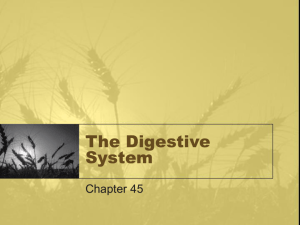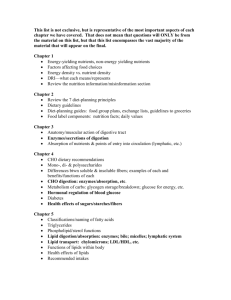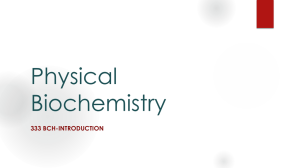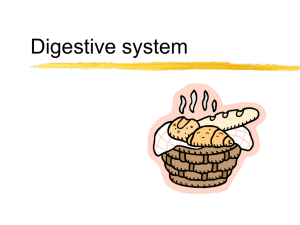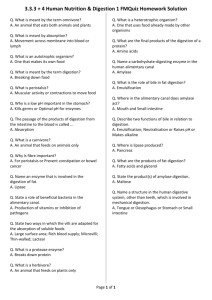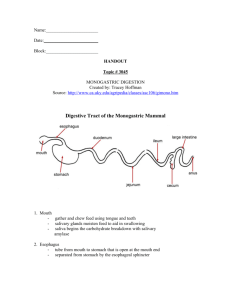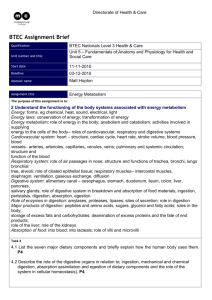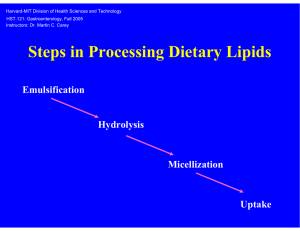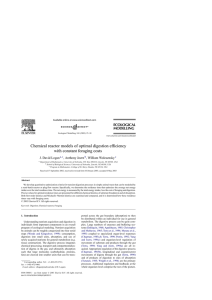The gastrointestinal tract (GIT)
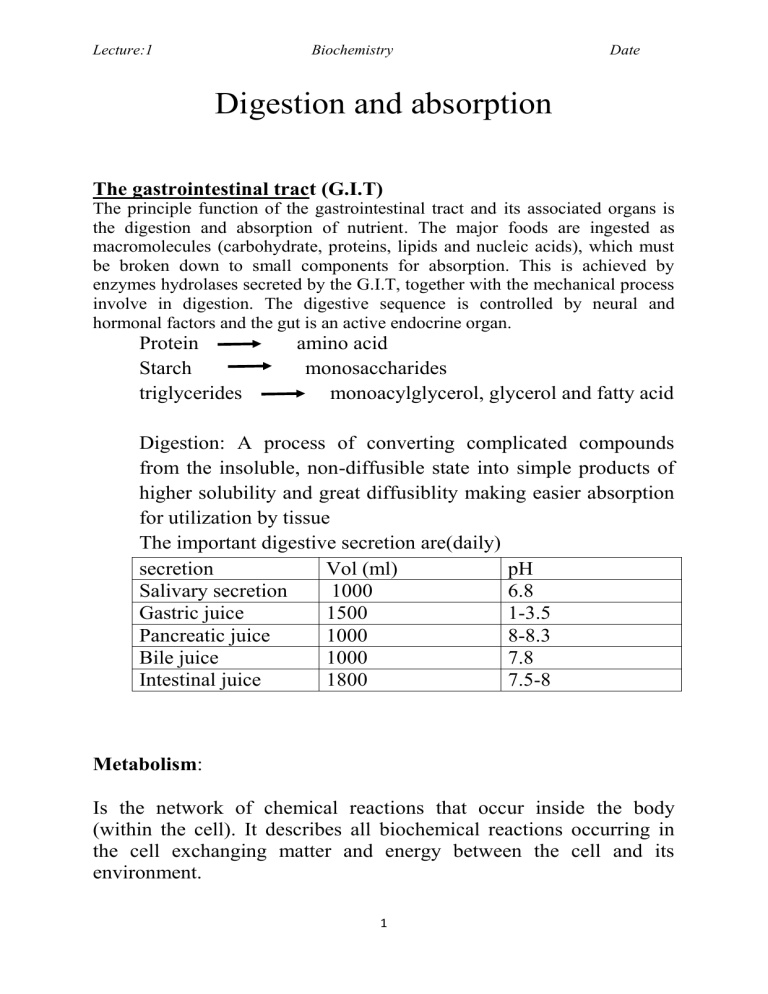
Lecture:1 Biochemistry Date
Digestion and absorption
The gastrointestinal tract (G.I.T)
The principle function of the gastrointestinal tract and its associated organs is the digestion and absorption of nutrient. The major foods are ingested as macromolecules (carbohydrate, proteins, lipids and nucleic acids), which must be broken down to small components for absorption. This is achieved by enzymes hydrolases secreted by the G.I.T, together with the mechanical process involve in digestion. The digestive sequence is controlled by neural and hormonal factors and the gut is an active endocrine organ.
Protein amino acid
Starch monosaccharides triglycerides monoacylglycerol, glycerol and fatty acid
Digestion: A process of converting complicated compounds from the insoluble, non-diffusible state into simple products of higher solubility and great diffusiblity making easier absorption for utilization by tissue
The important digestive secretion are(daily) secretion Vol (ml)
Salivary secretion 1000
Gastric juice
Pancreatic juice
Bile juice
Intestinal juice
1500
1000
1000
1800 pH
6.8
1-3.5
8-8.3
7.8
7.5-8
Metabolism :
Is the network of chemical reactions that occur inside the body
(within the cell). It describes all biochemical reactions occurring in the cell exchanging matter and energy between the cell and its environment.
1
Lecture:1 Biochemistry Date
Metabolites are the small molecules that are intermediates in the degradation or biosynthesis of biopolymers. The term intermediary metabolism is applied to the reactions involving these low-molecularweight molecules.
Metabolic pathways fall into three categories:
1.
Anabolic pathways which are those involved in the synthesis of large and more complex compounds from small molecules for example synthesis of protein from amino acids, synthesis of glycogen from carbohydrates and nucleic acid. Free energy is required for these processes.
2.
Catabolic pathways which are involved in the breakdown of large molecules into small molecules, therefore, it is the process of degradation (it can be absorbed and metabolized) for example the respiratory chain and oxidative phosphorylation).
3.
Amphibolic pathways which occur at the crossroad of metabolism, acting as links between the anabolic and catabolic pathways
After digestion, the simple food materials pass into the cells by a process called “absorption”. So the first part of metabolism is the digestion & absorption.
2
Lecture:1 Biochemistry Date
نابعث بساجراونا .د :مسلاا
لبق نم diploma ةداهش لين
ةينقتلا مادختسا يف ثملب ةيناطيربلا ةعماجلا يف يبيردتلا سروكلا يف GE health care
Ettan 2TM 2-D DIGE
ايلاخ لا نم ةصل ختسملا ةدقعم لا تا نيتوربلا طي لخ لصفو ليلحتل عساو قاطن ىلع مدختست ةينقت يهو
. ىرخأ ةيجولويب تانيع يا وأ ، ةجسنلأاو
3
Lecture:1 Biochemistry Date
نابعث بساجراونا .د :مسلاا
يبيردتلا سروكلا يف ةداهش لين
ةينقت مادختسا يف ايناطيرب يف life technologies
TM
ضارملاا فلتخم يف ةيجولياب تارشؤمك ةينيجلا تارييغتلا ةساردل Real-time PCR
4

